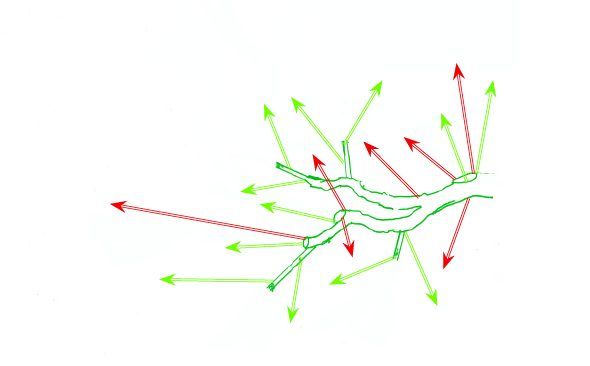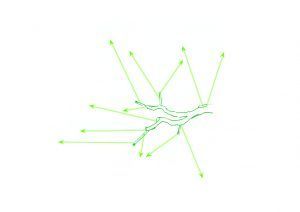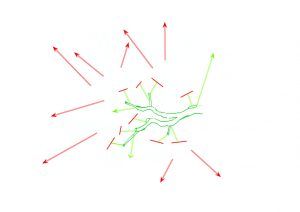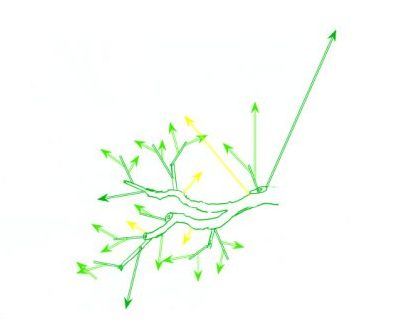Pinching in green: How can I gain density in my Malus bonsai?
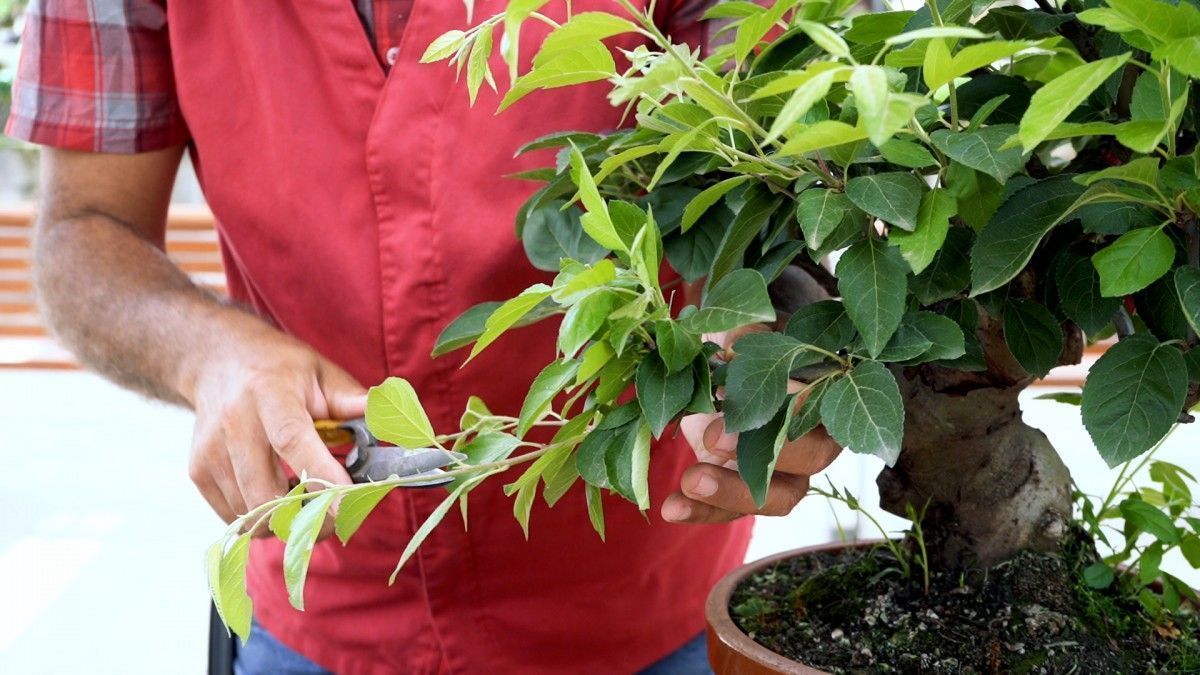
During the whole year we have been following some established steps. In winter we pruned the Malus bonsai (and all the deciduous species). In spring we removed the new buds that were growing in the wrong direction. But what should I do now? What is the next step? Keep reading and we will tell you what to do next. We still have a lot of work to do on our bonsai. Let’s start with pinching in green.
The next step is to make your tree crown gain density, that is, to grow many leaves. We can do that with the technique known as “pinching in green”.
Remember that after a drastic pruning there are no buds ready to grow and a large number of dormant buds develop. Those will be the new buds of our tree.
If we do not work these buds, they will grow untidy and we will lose all the energy of the growing season. Therefore, we will have to deeply prune our tree during growing season (in spring), which will slow down the whole process and the tree will take longer to start working again.
During this time, the roots will start to dry out and, if we water too much, they will begin to rot. The new buds will come out weak, often yellowish. The vigour of the tree will suffer and sometimes it will not recover until the following season. Therefore, the only time we can prune deciduous trees is in winter, when their growth has stopped, and the roots are dormant. At this time, the damage to the tree will be minimal. The work on deciduous trees could be summarized in this timeline.
THE COMPLETE PROCESS: Sprouting of a branch, after pruning (selection of sprouts)
After a strong pruning, the trees develop new buds by opening many dormant buds. It is an effect similar to an explosion. Most of these outbreaks are misdirected, and we have to eliminate them. In the drawing, well-directed buds are represented by the green arrows. Misdirected outbreaks, represented by the red arrows, must be eliminated as soon as possible.
Buds’ selection work is essential for the formation of bonsai. Very often it is a kind of sloppy work. If we don’t choose the buds well, the pinching work will hardly do any good.
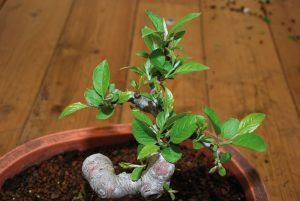
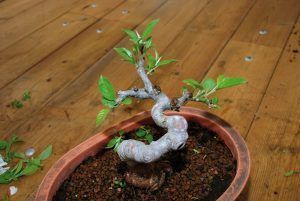
The pinching in green. The technique to gain density in my bonsai.
What happens when we pinch in green?
When we pinch in green at the end of spring, the tree always finds buds ready to grow, located on the young buds at the tips of the branches. Under these conditions, the tree almost does not slow down its growing, but rather redirects it in a different way. The roots hardly stop their activity, and the new sprouting is resumed with an abundant supply of good quality sap. The result is a rapid densification of the branches. We have let the buds grow. These will form the basic and main structure of the branches. Now, to densify it, we must pinch all the buds and leave only a couple of leaves on each of them, as the buds are young and in full growth. Dormant buds will grow faster, generating more leaves on the same bud. Activating its branching and generating a more complex structure of branches and leaves. In this way, a density of leaves and branches will be generated closer to the trunk and our bonsai will look much fuller and healthier.
You can see the process in the following images:
- In the first image you can see the branch with the good buds developing and in the red line I indicate the cut that you must make for the pinching, as I explained before, you should leave a couple of leaves and cut the end of the bud.
- In the second image you will see the effect of the pinching since in each bud that you pinched it responds with two or more new buds. If you look closely, these buds come out much closer to the trunk and bring the green very close, that is, they compact it.
Check the next video to solve any doubts about “pinching in green”. We hope it will be of great help.
What do we achieve with the pinching in green?
- First, generate many more new leaves and twigs. This is called generating “Density”.
- Second, that the new buds are shorter and grow closer to the trunk. This is called “Compaction.”
As you can see in your trees, if we work in an orderly manner, doing the jobs when and how they are meant to be done, our bonsai will react much better. We will obtain better results and we will shorten the work time that we will use to have our bonsai closer to its final design.
So, let’s get to work, you have a lot of pinching in green to do in your bonsai.
Until next time!
You may also be interested in…
Fertilising in autumn, why is it so important for our bonsai?
About the Author
Mistral Bonsai
In Mistral Bonsai we are a communication team, technicians and masters committed from the first day to disseminating the wonderful art of bonsai. A world that offers many things to share. We believe that a bonsai is a tree with a soul, unique and unrepeatable. Another of our most essential pillars is, how could it be otherwise, our close commitment to the preservation of the environment and nature.
Categories
Bonsai cultivation and care (60)
Bonsai gift (2)
Bonsai pests and diseases (7)
Bonsai repotting (3)
Bonsai species (1)
bonsai substrates (2)
Bonsai summer (1)
bonsai tools (1)
Bonsai work (13)
Ceramic pots (3)
Chinese culture (2)
Chinese culture (1)
Coniferous bonsai (2)
Conifers (1)


